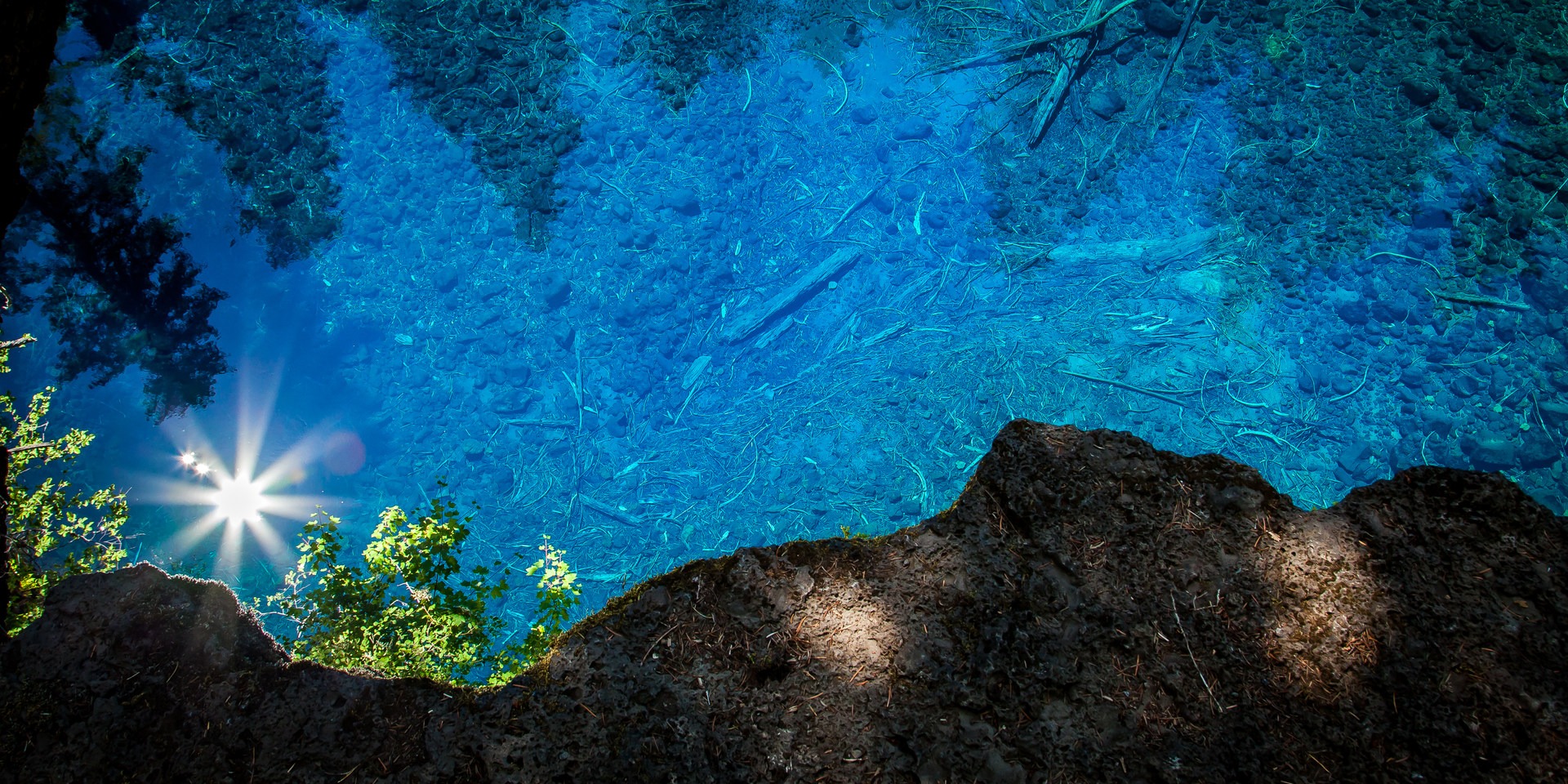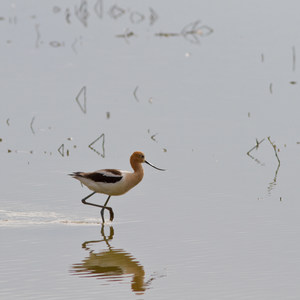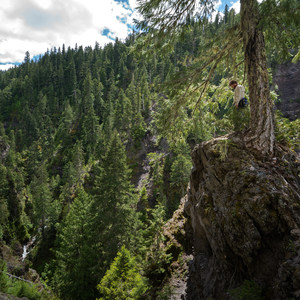The stretch of the McKenzie River Trail that runs between Carmen Diversion Reservoir and Tamolitch Falls, also known as the Blue Pool, is notable for the conspicuous absence of the McKenzie River. After leaving Clear Lake, the McKenzie’s path is steep, wild, and includes miles of turbulent drops, sharp banks, and both Sahalie and Koosah Falls. Carmen Diversion Reservoir is a brief moment of calm; here the Eugene Water and Electric Board diverts a good portion of the river through underground tunnels to Scott Reservoir. The portion that is not diverted leaves the reservoir and continues to flow beneath the riverbed all the way to Tamolitch Falls. As a result of these diminished flows, Tamolitch Falls are no more. The giant basin that the falls once poured into, however, is constantly filled by the underground river as if by a spring, and it remains one of the most beautiful chapters in this upper McKenzie saga.
When compared with the turbulent, noisy trail sections that lie above Carmen Reservoir, this stretch of the McKenzie River Trail is an almost eerie respite. With its ghostly bridge crossings and empty pools, the vacant riverbed silently gestures towards the momentous fluvial incarnations upriver. The trail works its way through gorgeous stands of old-growth Douglas fir and cedar that are dense enough to limit understory growth. The clear floor, dense canopy, and solid presence of fir and cedar columns conveys a sense of the grandest architecture. Maples dominate in the areas where the trail swerves toward the dry riverbed. You will cross four bridges on the way to Tamolitch Pool, and over each it is possible to imagine the unconstrained river pushing up to the lava banks.
Tamolitch Pool is truly breathtaking the first time you see it. You will spot the former falls by the conspicuous gap in the rim around the pool, and it is along this end of the pool that the McKenzie now springs up from its underground journey. Look closely at the surface of the water to see the currents billowing on the surface. The pool itself is a remarkable sapphire gem, deep and clear enough for a viewer standing some 30 feet above the surface to see every twig that rests on the bottom.
Plenty of visitors decide to try a jump or two from the surrounding cliffs. Be aware that, in addition to the dangers affiliated with height, this water is only a few degrees above freezing. No matter how warm you are from the hike, this water is dangerously cold and has proven perilous to more than a few very healthy jumpers. Take precautions, and consider walking around the pool to the far side where jumps would be lower and egress easier.
Logistics + Planning
Current Weather: Powered by Dark Sky







Preferable season(s)
Congestion
Parking Pass
Pros
Cons
Trailhead Elevation
Features
Suitable for
Oregon Field Guide is OPB's long-running local weekly TV series. The program covers natural resources, ecological issues, outdoor recreation and travel destinations across the Northwest region. This award-winning show is one of the most-watched local productions in the public broadcasting system.
Oregon Field Guide also extends the work it does in the field for the television series across radio and the Web, providing a greater degree of coverage.
Oregon Field Guide airs Thursday evenings at 8:30 p.m. and repeats Sundays at 1:30 a.m. and 6:30 p.m. In the Mountain Time zone of Eastern Oregon, the program airs at 9:30 p.m. Thursdays, and at 7:30 p.m. Sundays.
























Comments
The area is a great place to enjoy the mossy wet Oregon beauty on mild fall/winter days... I'm sure the summer days are just that much more enjoyable!
Sign In and share them.